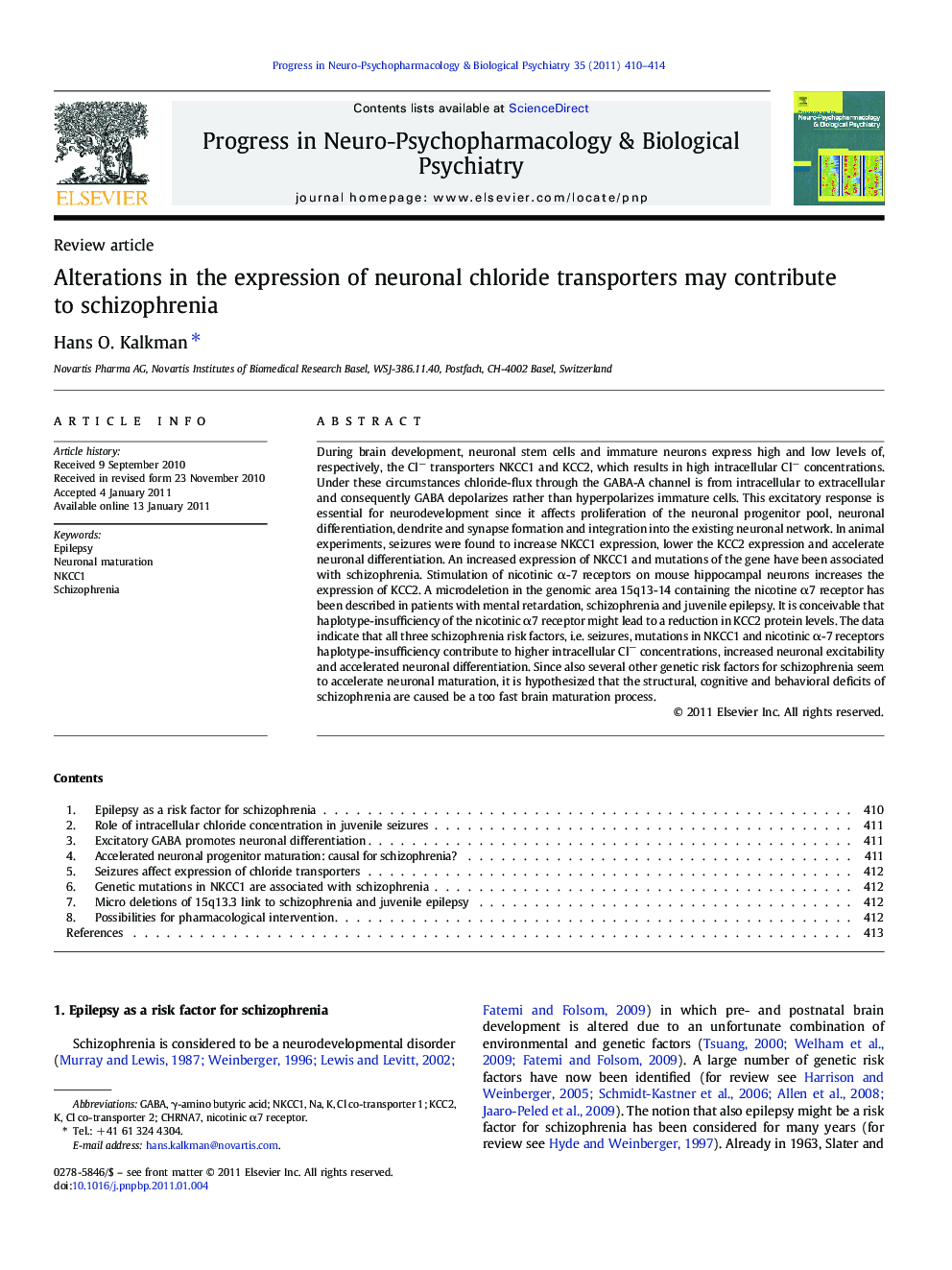| Article ID | Journal | Published Year | Pages | File Type |
|---|---|---|---|---|
| 5845141 | Progress in Neuro-Psychopharmacology and Biological Psychiatry | 2011 | 5 Pages |
During brain development, neuronal stem cells and immature neurons express high and low levels of, respectively, the Clâ transporters NKCC1 and KCC2, which results in high intracellular Clâ concentrations. Under these circumstances chloride-flux through the GABA-A channel is from intracellular to extracellular and consequently GABA depolarizes rather than hyperpolarizes immature cells. This excitatory response is essential for neurodevelopment since it affects proliferation of the neuronal progenitor pool, neuronal differentiation, dendrite and synapse formation and integration into the existing neuronal network. In animal experiments, seizures were found to increase NKCC1 expression, lower the KCC2 expression and accelerate neuronal differentiation. An increased expression of NKCC1 and mutations of the gene have been associated with schizophrenia. Stimulation of nicotinic α-7 receptors on mouse hippocampal neurons increases the expression of KCC2. A microdeletion in the genomic area 15q13-14 containing the nicotine α7 receptor has been described in patients with mental retardation, schizophrenia and juvenile epilepsy. It is conceivable that haplotype-insufficiency of the nicotinic α7 receptor might lead to a reduction in KCC2 protein levels. The data indicate that all three schizophrenia risk factors, i.e. seizures, mutations in NKCC1 and nicotinic α-7 receptors haplotype-insufficiency contribute to higher intracellular Clâ concentrations, increased neuronal excitability and accelerated neuronal differentiation. Since also several other genetic risk factors for schizophrenia seem to accelerate neuronal maturation, it is hypothesized that the structural, cognitive and behavioral deficits of schizophrenia are caused be a too fast brain maturation process.
Research Highlights⺠Seizures increase NKCC1 and decrease KCC2 expression. This raises intracellular Cl- levels. ⺠High intracellular Cl- levels render GABA excitatory, promoting neuronal differentiation. ⺠Expression levels and functional activity of the two Cl- transporters are altered in schizophrenia, such that high intracellular Cl- levels are predicted. ⺠Seizures and Cl- transporters may contribute to schizophrenia by inappropriately accelerating neuronal differentiation.
